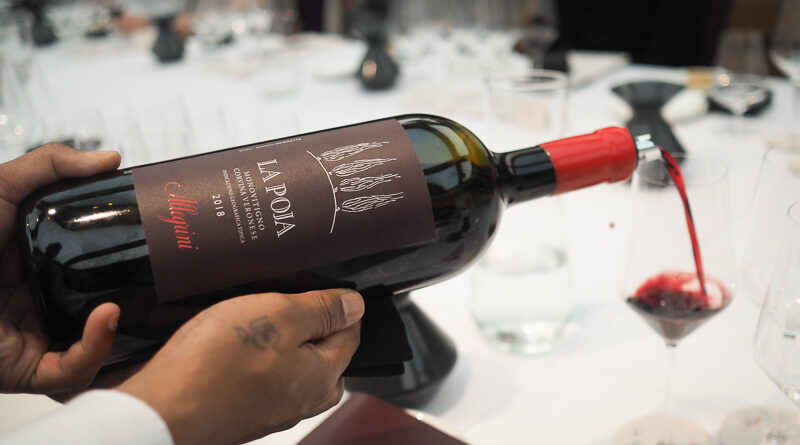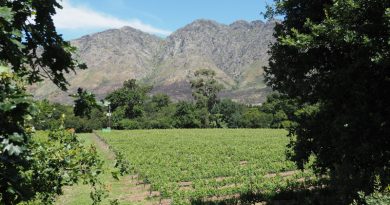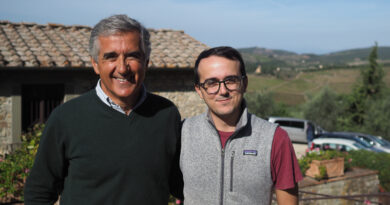Allegrini’s La Poja: a vertical tasting of this important Veneto wine
Website: https://allegrini.it/en/
Silvia and Francesco Allegrini are the seventh generation involved with the business, and they presented this vertical tasting of one of their single-vineyard wines, La Poja. They are based in the heart of the Valpolicella Classico region. Valpolicella translates as the valley of many cellars, in Latin. In Roman times, wines were being made here that were thought of highly.
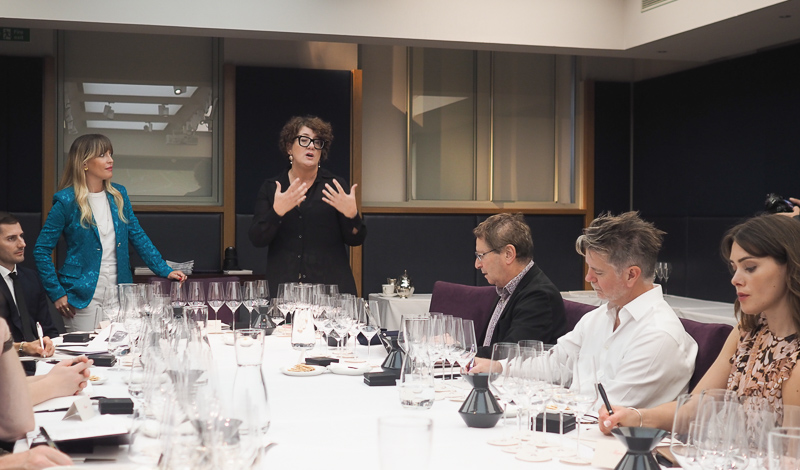
Until their grandfather Giovanni decided to focus on grapegrowing Allegrini was more of a farm, with mixed animal and plant cultivation. From the late 1960s he decided wine was his focus. He understood that the regional had potential for top quality wines, and he went the opposite way from his peers. In the 1970s Valpolicella was a region making popular, low quality wine, focusing on quantity. He had different ideas.
In the late 1970s he purchased the La Grola hill, and returned viticulture to the hillsides, where the potential for quality was higher, but the costs of viticulture were much higher, too. On the La Grola hill, the top part is La Poja, a small plateau with bony limestone soils.
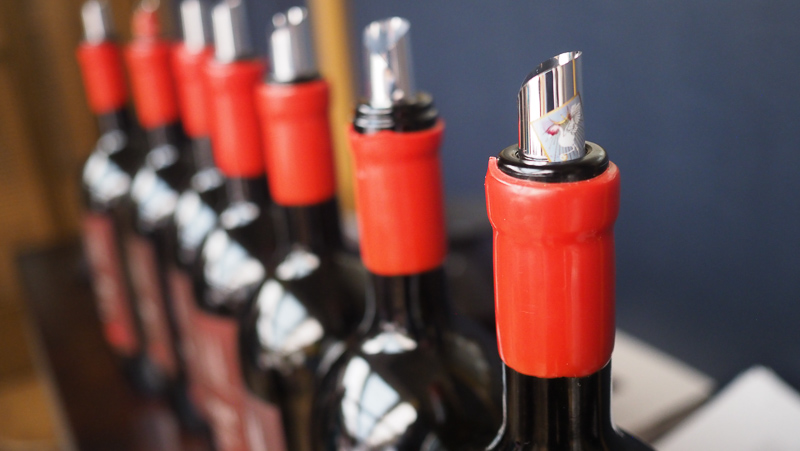
With this vineyard, he started to introduce the concept of single-vineyard wines to the region. He wasn’t the only one, but was among the pioneers.
He introduced guyot training, rather than the typical pergola, and the vineyard of La Poja was planted in 1979, with the first vintage in 1983. The first vintages were table wine and thus couldn’t disclose a vintage on the label. They did, and got fined by the authorities. This was the wine that started their journey of making high quality wines. They added La Grola and Palazzio de la Torre later. They declassified these to IGT from Valpolicella Superiore, because when they replanted they just wanted to use Corvina as a grape variety. It has to be a blend, and the DOC rules said 60% maximum Corvina in the blend (today it is 95%).
The soils are very chalky, light in colour. The site is elevated (320 m), with Lake Garda in the west helping to create a good microclimate, reducing frost risk in the spring. The guyot system allowed them to double the number of vines and halve the number of bunches, resulting in better phenolic maturity and smaller bunches and berries.
In the past they left the chalky soil bare to reflect light, but now they are using plant cover in the rows. The soils are mostly cretaceous limestone.
In the winery, things haven’t changed much. The wine is wild fermented in stainless steel, and malolactic takes place in barrel. In the past they used more oak, but now they use medium-toasted barrels. It’s 100% new oak, for 20 months, and then goes to large casks for 8 months before bottling.
These wines are really interesting, and some of the vintages are excellent. All were tasted from magnum. But I’m left with a sense that the wines are slightly fighting their élevage: do they need 100% new oak for 20 months? Could there be more clarity and definition, and potential for longer ageing, with an alternative élevage?
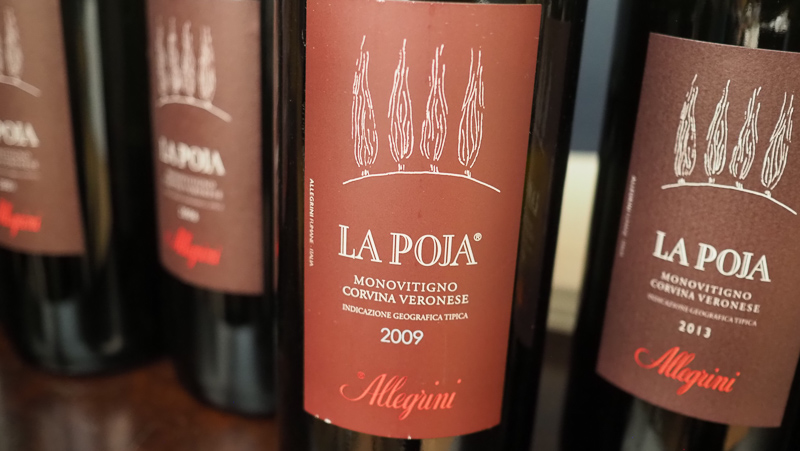
THE WINES
La Poja 2018
A long harvest with slow ripening. Harvest was mid-October. Lively and bright with sweet cherries and berries. Bright and focused with a core of sweet fruit, and some sour cherry notes on the finish, as well as a touch of almond/aniseed. There’s a lovely freshness here with good tannic structure sitting under the fruit. Lively and bright with a sense of focus and finish. Good acidity. There’s some spicy woody character here, but it’s beginning to integrate quite well. 94/100
La Poja 2016
Some nice development here. Has sweet fruit with fine spices and notes of almonds and herbs as well as leather and cured meats, as well as notes of wild strawberry and rhubarb. The palate has some structure with a twist of bitterness and sour cherry. Nice fruit here with some more savoury notes from a little maturity. Has some freshness on the finish: drinking very nicely. 94/100
La Poja 2013
Some development here with some earth and herbs, showing sweet warm spicy notes, hints of autumnal leaves and fine herbal notes, alongside chalky black cherry and plum fruit. There are some notes of stewed plums and damson, as well as some cured meat and leather. This is developing nicely. 93/100
La Poja 2009
This is warm and spicy on the nose with sweet cherries and plums as well as some ash and tar. The palate is ripe and sweetly fruited, showing some definition but also some warmth. There’s some sweetness to the fruit and some density, but also softness. This has a lot of warmth to it with richness and depth. Some balsamic hints on the finish with a touch of bitterness. 92/100
La Poja 2006
A very warm vintage. Some maturity here. Bricking around the rim with sweet cherries and plums, with some spicy, smoky oak character blending with the mellow fruits. This is dense and sweetly fruited and now fully mature with a mellow spicy character and ripe, smooth fruit. Has quite a bit of development, and is for drinking soon. 92/100
La Poja 2001
A good, typical vintage with no drought. Mature with some soft, spicy, minty characters in the mix. It’s bold, ripe and dense with good tannins and nice acidity. There’s a slight balsamic character with cured meats and some finesse. There’s a contrast between the softer, mature notes, and then the brightness and focus on the finish. 94/100
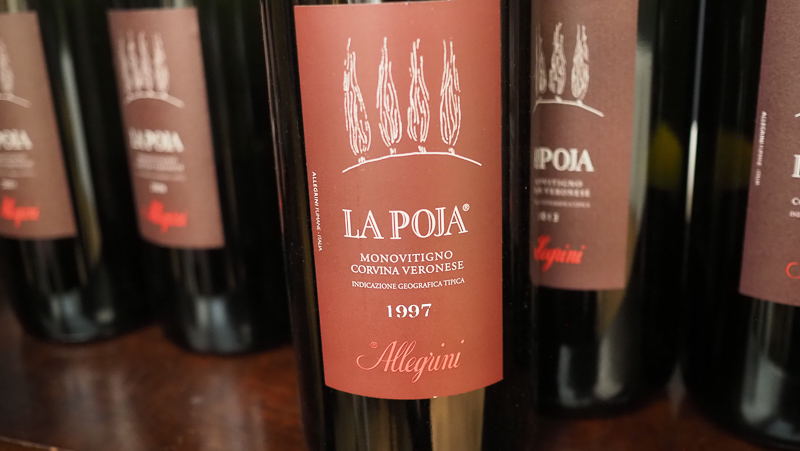
La Poja 1997
This is mature but in a really good place with smooth tannins, but still some structure, and nice freshness under the sleek, seamless berry fruits. Has hints of earth and leather with nice texture. It’s really mature but in a good place with some complexing notes of dried herbs and leather, with sweetness and some fine grainy chalky texture on the finish. In a really good place. 94/100
Find these wines with wine-searcher.com

